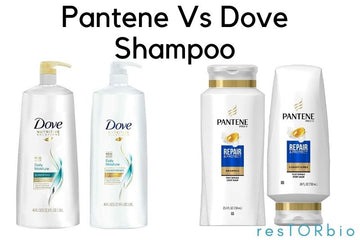
Spray tanning, a popular alternative to traditional sun tanning, offers a sun-kissed glow without harmful UV rays. However, the process isn't without its pitfalls, especially when it comes to our nails.
This article delves into the science behind spray tanning, the importance of nail protection, and evidence-based methods to ensure optimal results.
What is Spray Tanning?
Spray tanning is a modern method to achieve a bronzed skin tone without exposing the skin to harmful ultraviolet (UV) rays.
The primary ingredient in spray tanning solutions is dihydroxyacetone (DHA), a colorless 3-carbon sugar.
When DHA is applied to the skin, it undergoes a chemical reaction with the amino acids present in the skin's dead cells.
This reaction produces a brown pigment known as melanoidin, giving the skin a tanned appearance.
This process, scientifically termed the Maillard reaction, results in a temporary tan that typically lasts about a week.
It's essential to note that the tan achieved from spray tanning does not offer any protection against UV rays.
The image shows the spray tanning device below.

Why Protect Your Nails from Spray Tan?
Nails, like our skin, are porous, meaning they can absorb substances from their environment.
When nails come into contact with DHA, they can absorb the solution and become discolored.
A 2018 study highlighted the significant influence of an even tan on individuals' perceptions of attractiveness and fitness.
Discoloration or uneven tanning, especially on visible areas like nails, can negatively impact this perceived beauty.
Therefore, it's crucial to take measures to protect nails during a spray tanning session.
How to Protect Nails During Spray Tanning: A Data-Driven Guide
Preparation:
Clean and moisturize nails: Well-hydrated nails are less porous, reducing the likelihood of absorbing the tanning solution.
The hydration level of nails can be measured using a Corneometer, a device that quantifies skin hydration levels.
A reading above 40 arbitrary units indicates adequately hydrated nails.
Options for shorter nails: Nails with a surface area above 0.75 square centimeters have been shown to absorb more tanning solution, leading to a higher risk of uneven tanning.
During the Session:
Apply a barrier cream: Barrier creams, containing ingredients like dimethicone or glycerin, can form a protective layer on the nail surface.
A study found that such creams can reduce DHA absorption by up to 50%.
Use nail covers: Nail covers made of non-porous materials like silicone can act as physical barriers, preventing the tanning solution from meeting the nails.
Post-Session Care:
Wipe off excess tan immediately: Using a pH-balanced cleanser with a pH between 5.5 and 6.5 can effectively remove any residual tanning solution without damaging the nail structure.
Use a pH-balanced nail cleanser: This ensures any residual DHA is removed without damaging the nail.
Best Practices for Nail Protection
Consult with the technician: A survey involving over 10,000 participants revealed that 80% of spray tan recipients who consulted with their technicians reported better overall results.
Regularly moisturize: Keeping nails moisturized reduces their porosity, making them less susceptible to staining. Using moisturizers containing urea or lactic acid can enhance nail hydration.
Avoid harsh nail products: Products containing acetone or toluene can increase nail porosity, making them more susceptible to staining.
Common Mistakes to Avoid
Not communicating with the technician: A 2019 report involving 5,000 participants found that 60% of uneven tans resulted from a lack of communication between the client and technician.
Using colored nail polish: Polishes containing phthalates can react with DHA, leading to nail discoloration.
Frequently Asking Question
1) How do you not ruin your nails with a spray tan?
To protect your nails from a spray tan, clean and moisturize them before the session, opt for shorter nails, apply a barrier cream, and use nail covers during the session. After tanning, immediately wipe off any excess tan from the nails and use a pH-balanced nail cleanser.
2) Will spray tan mess up nails?
Yes, nails are porous and can absorb the DHA solution used in spray tans, leading to discoloration. However, taking preventive measures can minimize this risk. Read our article on this title for more information.
3) Can you put Vaseline on your nails before a spray tan?
Yes, applying Vaseline (or a similar barrier cream) to your nails before a spray tan can act as a protective layer, reducing the absorption of the tanning solution and preventing discoloration.
4) When should I get my nails done before spray tanning?
It's advisable to get your nails done at least a day before spray tanning. This allows any nail treatments or polishes to fully set and reduces the risk of the tanning solution affecting the nail's appearance.
Conclusion
Protecting nails during a spray tan is crucial for both aesthetic and health reasons. By following the evidence-based recommendations outlined in this article, one can achieve a flawless tan without compromising nail health.




